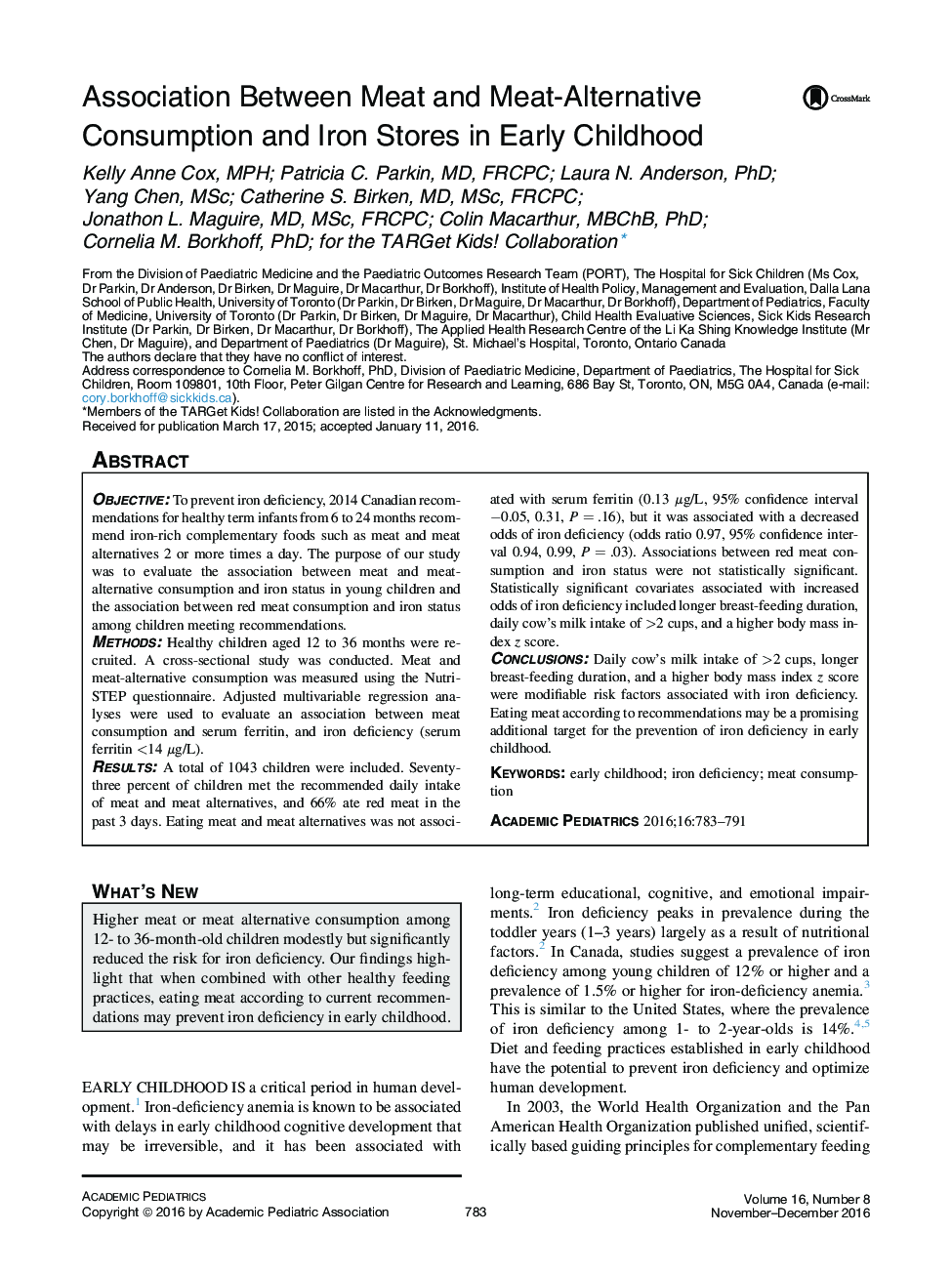| کد مقاله | کد نشریه | سال انتشار | مقاله انگلیسی | نسخه تمام متن |
|---|---|---|---|---|
| 5716794 | 1411170 | 2016 | 9 صفحه PDF | دانلود رایگان |
ObjectiveTo prevent iron deficiency, 2014 Canadian recommendations for healthy term infants from 6 to 24 months recommend iron-rich complementary foods such as meat and meat alternatives 2 or more times a day. The purpose of our study was to evaluate the association between meat and meat-alternative consumption and iron status in young children and the association between red meat consumption and iron status among children meeting recommendations.MethodsHealthy children aged 12 to 36 months were recruited. A cross-sectional study was conducted. Meat and meat-alternative consumption was measured using the NutriSTEP questionnaire. Adjusted multivariable regression analyses were used to evaluate an association between meat consumption and serum ferritin, and iron deficiency (serum ferritin <14 μg/L).ResultsA total of 1043 children were included. Seventy-three percent of children met the recommended daily intake of meat and meat alternatives, and 66% ate red meat in the past 3 days. Eating meat and meat alternatives was not associated with serum ferritin (0.13 μg/L, 95% confidence interval â0.05, 0.31, P = .16), but it was associated with a decreased odds of iron deficiency (odds ratio 0.97, 95% confidence interval 0.94, 0.99, P = .03). Associations between red meat consumption and iron status were not statistically significant. Statistically significant covariates associated with increased odds of iron deficiency included longer breast-feeding duration, daily cow's milk intake of >2 cups, and a higher body mass index z score.ConclusionsDaily cow's milk intake of >2 cups, longer breast-feeding duration, and a higher body mass index z score were modifiable risk factors associated with iron deficiency. Eating meat according to recommendations may be a promising additional target for the prevention of iron deficiency in early childhood.
Journal: Academic Pediatrics - Volume 16, Issue 8, NovemberâDecember 2016, Pages 783-791
